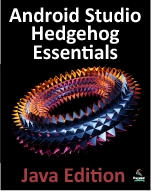Difference between revisions of "Android Studio Development Essentials Introduction"
m (Text replacement - "<table border="0" cellspacing="0" width="100%">" to "<table border="0" cellspacing="0">") |
|||
| Line 1: | Line 1: | ||
| − | <table border="0" cellspacing="0 | + | <table border="0" cellspacing="0"> |
<tr> | <tr> | ||
<td width="20%">[[Android Studio Development Essentials|Previous]]<td align="center">[[Android Studio Development Essentials|Table of Contents]]<td width="20%" align="right">[[Setting up a Windows, Linux or Mac OS X Android Studio Development Environment|Next]]</td> | <td width="20%">[[Android Studio Development Essentials|Previous]]<td align="center">[[Android Studio Development Essentials|Table of Contents]]<td width="20%" align="right">[[Setting up a Windows, Linux or Mac OS X Android Studio Development Environment|Next]]</td> | ||
| Line 31: | Line 31: | ||
<hr> | <hr> | ||
| − | <table border="0" cellspacing="0 | + | <table border="0" cellspacing="0"> |
<tr> | <tr> | ||
<td width="20%">[[Android Studio Development Essentials|Previous]]<td align="center">[[Android Studio Development Essentials|Table of Contents]]<td width="20%" align="right">[[Setting up a Windows, Linux or Mac OS X Android Studio Development Environment|Next]]</td> | <td width="20%">[[Android Studio Development Essentials|Previous]]<td align="center">[[Android Studio Development Essentials|Table of Contents]]<td width="20%" align="right">[[Setting up a Windows, Linux or Mac OS X Android Studio Development Environment|Next]]</td> | ||
Revision as of 14:31, 5 May 2016
| Previous | Table of Contents | Next |
| Table of Contents | Setting up a Windows, Linux or Mac OS X Android Studio Development Environment |
The goal of this book is to teach the skills necessary to develop Android based applications using the Android Studio Integrated Development Environment (IDE) and the Android 5.0 Software Development Kit (SDK).
Beginning with the basics, this book provides an outline of the steps necessary to set up an Android development and testing environment. An overview of Android Studio is included covering areas such as tool windows, the code editor and the Designer tool. An introduction to the architecture of Android is followed by an in-depth look at the design of Android applications and user interfaces using the Android Studio environment. More advanced topics such as database management, content providers and intents are also covered, as are touch screen handling, gesture recognition, camera access and the playback and recording of both video and audio. This edition of the book also covers printing, transitions and cloud-based file storage.
In addition to covering general Android development techniques, the book also includes Google Play specific topics such as implementing maps using the Google Maps Android API, in-app billing and submitting apps to the Google Play Developer Console.
Chapters also cover advanced features of Android Studio such as Gradle build configuration and the implementation of build variants to target multiple Android device types from a single project code base. Assuming you already have some Java programming experience, are ready to download Android Studio and the Android SDK, have access to a Windows, Mac or Linux system and ideas for some apps to develop, you are ready to get started.
Errata
Whilst we make every effort to ensure the accuracy of the content of this book, it is inevitable that a book covering a subject area of this size and complexity may include some errors and oversights. Any known issues with the book will be outlined, together with solutions, at the following URL:
http://www.ebookfrenzy.com/errata/androidstudio.html
| Previous | Table of Contents | Next |
| Table of Contents | Setting up a Windows, Linux or Mac OS X Android Studio Development Environment |





